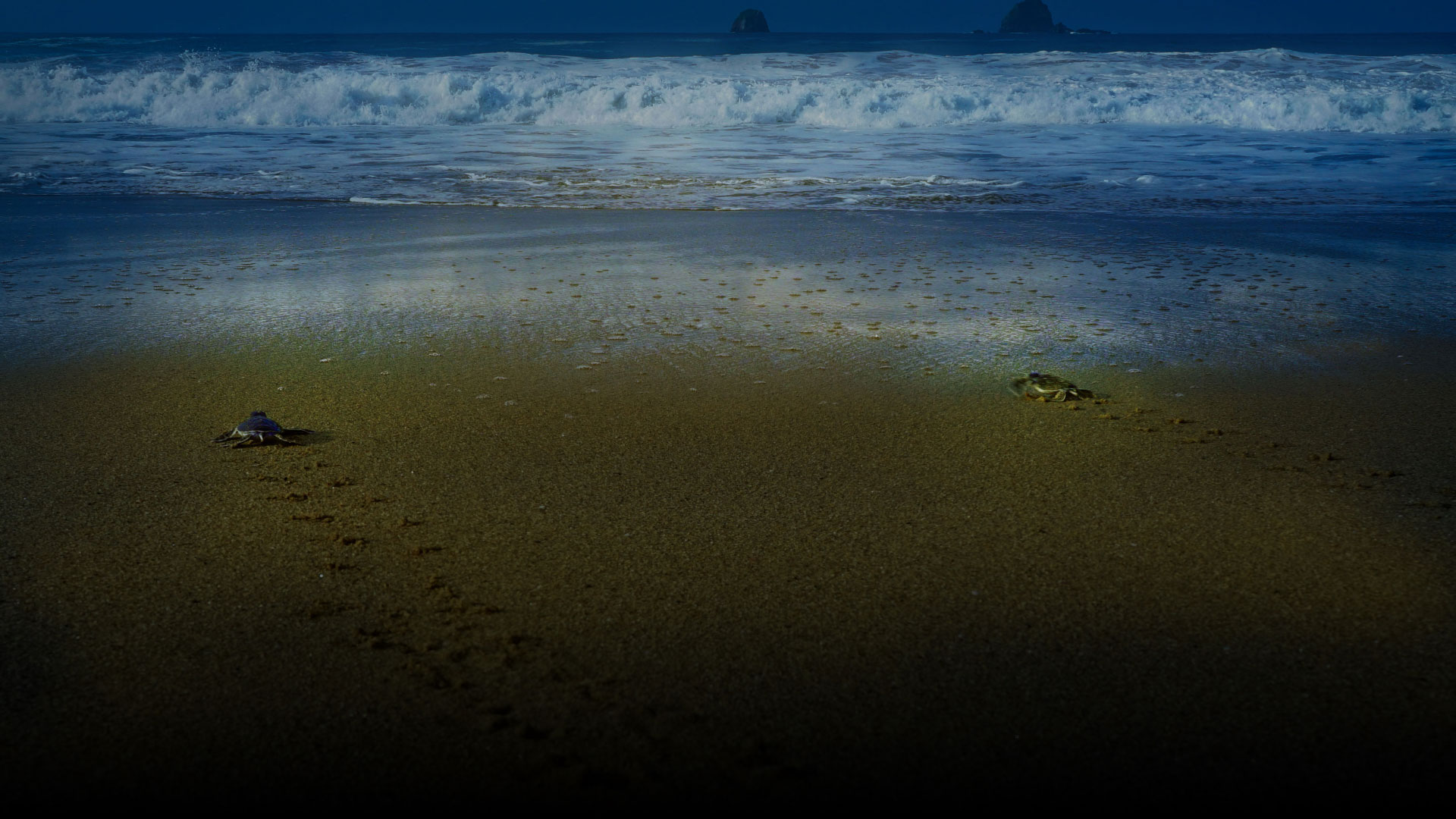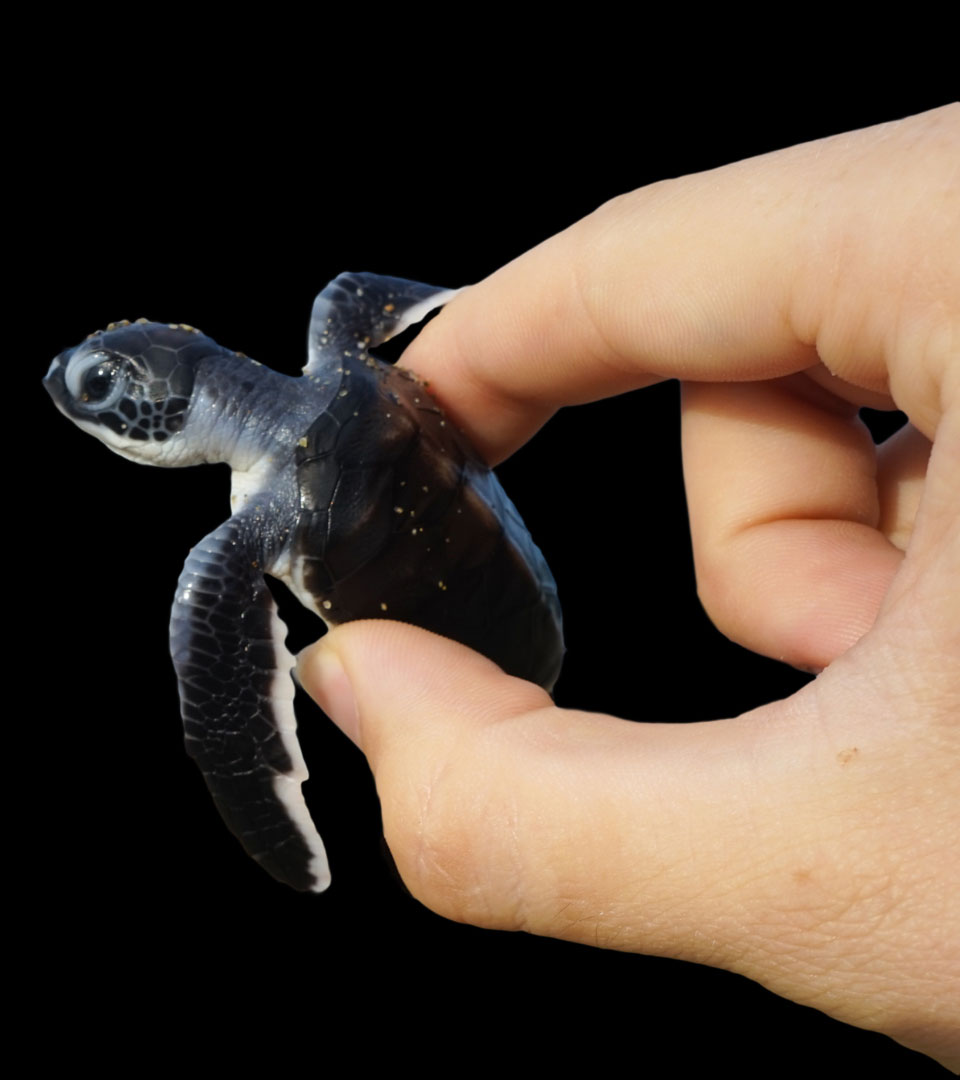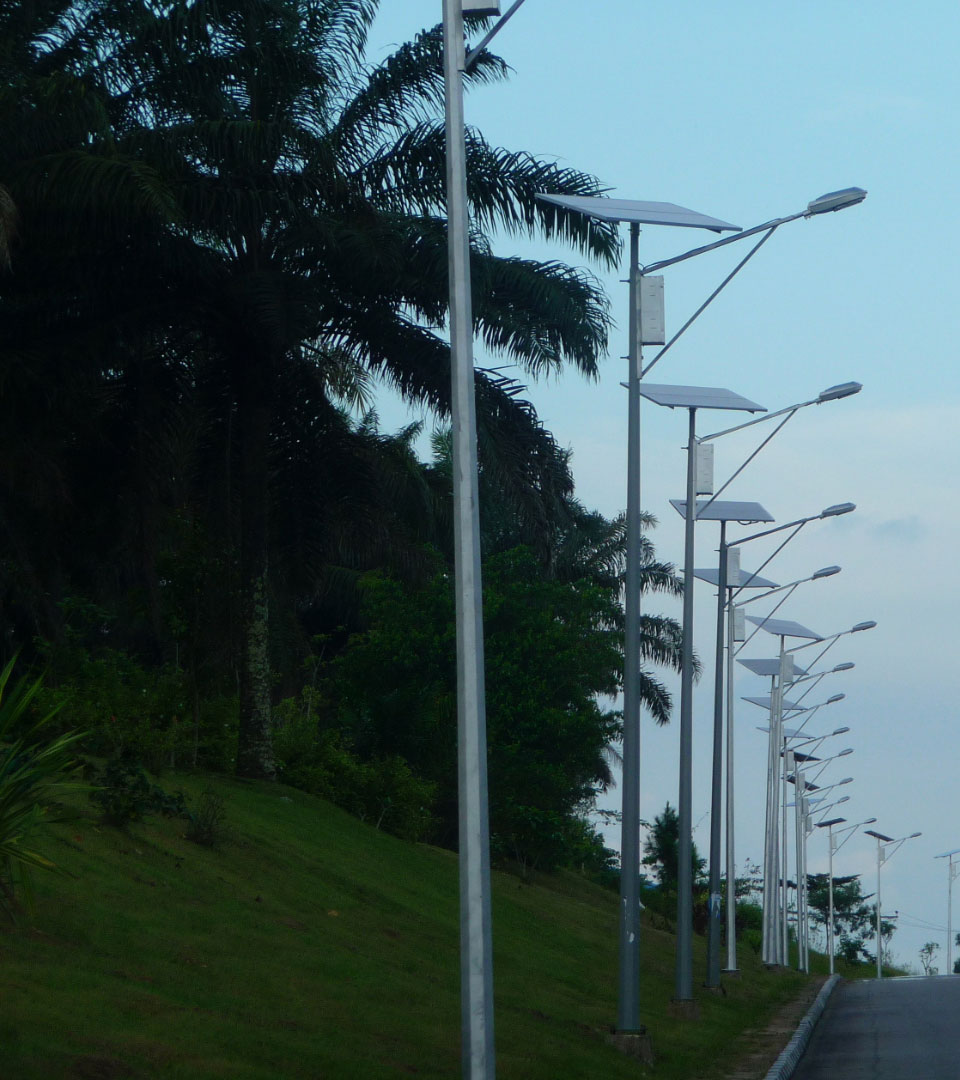

Baby sea turtles & other wildlife use light to navigate.
Artificial lights threaten their survival.
Ten years ago, the focus of our company was protecting the night sky over the Big Island of Hawaii. Since then, awareness of the impact of new, artificial lighting on the environment has exploded. Our technology employed initially for a specific purpose has expanded into multiple environmental disciplines. Field studies have emerged with different objectives, such as light pollution, impact on food pollination, endangered species conservation, and human impact. Some of the new and exciting \ areas of research include nocturnal insects in the Amazon and baby turtles along the North American coast.
Our turtle-friendly lighting
can help save baby sea turtles.
NIGHT GLOW DISORIENTS BABY SEA TURTLES
With increased development on the Florida coastline, turtles on the Endangered Species List are now threatened by the growth of artificial lighting from nearby roads and cities. Luminaires can deter proper nesting for sea turtles and disorient hatchlings, who are often attracted to the buildings or roads that can outshine the natural moon. This can severely decrease the probability of baby sea turtles making it successfully to the water and surviving to adulthood. To help combat this, we are developing responsible lighting utilizing spectral influence, intensity, and proper installation on and nearby the beaches.


The wrong light at night is
harmful to people & animals.
THE AMAZON RAIN FOREST IS AN UNTOUCHED LABORATORY
Studies are underway looking at the influence of artificial lighting on insects populations in the Amazon. While tested in a remote, isolated area where few humans venture, this study could shed light on the relationship between insects, man-made light, and airborne diseases worldwide. Our lights are an integral part of these tests, potentially offering a way to minimize health risks.
THE BIGGER IMPACT OF BLUE LIGHT
With the drive for energy efficiency, LEDs have been chosen as the technology of the future. Being a newer light, the opportunity to get a brighter “daytime” light at night might seem like a step forward. However, this white light contains high levels of blue content, which new studies suggest could detrimental. Recommendations from the American Medical Association would support this position. Blue light could impact everything from:
- Glare at night (while driving)
- Sleep habits
- Human eye health
- Animal behavior
- Food pollination
- Human disease
- Senior healthcare
- Bird migration
- Salmon migration
- Animal rehabilitation & breeding
- Insects and disease
- Plant cycles
- And much more…..
We’re passionate about lighting & the environment,
so please contact us to learn more.
C&W ENERGY SOLUTIONS
P | 1-480-998-1694
E | info@cwenergyusa.com
A | P.O. Box XXXX, Phoenix, AZ
Contact Us
